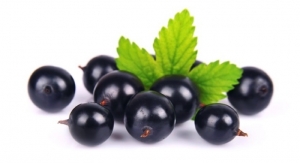01.07.19
U.S. consumers are seeking their echo chambers of health or tribes through blogs and social media, much in the same way they use them for lifestyles and politics, according to The NPD Group.
Health professionals, friends, and family were once go-to sources for information on health, but the rising number of bloggers and online communities enable consumers from anywhere on the planet to find like-minded individuals. And just like other echo chambers, oftentimes consumers will follow plans promoted by a blogger or online community as opposed to sound science.
An example of the Internet's influence on health is that nearly 60% of consumers who engage in clean eating, research their foods online. More than a quarter of adults rely on social media for information on GMOs and in which food they're found. Consumers engaged in lifestyles like paleo, Whole30, and plant-based often find their tribes online, according to NPD's Eating Patterns in America.
Consumers making their own rules or following an online tribe that shares their beliefs plays out in dieting as well. For those who diet—and fewer U.S. consumers do—the most popular diet is one of their own making. It's not that consumers create diets that are filled with indulgences; rather, they find lifestyles, or tribes that match their own interests or values.
"Clearly this is a challenging environment for food and beverage marketers who are trying to reach broad audiences," said David Portalatin, NPD food industry advisor and author of Eating Patterns in America. "The key is to show flexibility and that their solutions can fit into a myriad of tribes, and understand that many gen Zs and millennials started with these tribes at a young age and will likely continue to follow their tribes as they age."
Health professionals, friends, and family were once go-to sources for information on health, but the rising number of bloggers and online communities enable consumers from anywhere on the planet to find like-minded individuals. And just like other echo chambers, oftentimes consumers will follow plans promoted by a blogger or online community as opposed to sound science.
An example of the Internet's influence on health is that nearly 60% of consumers who engage in clean eating, research their foods online. More than a quarter of adults rely on social media for information on GMOs and in which food they're found. Consumers engaged in lifestyles like paleo, Whole30, and plant-based often find their tribes online, according to NPD's Eating Patterns in America.
Consumers making their own rules or following an online tribe that shares their beliefs plays out in dieting as well. For those who diet—and fewer U.S. consumers do—the most popular diet is one of their own making. It's not that consumers create diets that are filled with indulgences; rather, they find lifestyles, or tribes that match their own interests or values.
"Clearly this is a challenging environment for food and beverage marketers who are trying to reach broad audiences," said David Portalatin, NPD food industry advisor and author of Eating Patterns in America. "The key is to show flexibility and that their solutions can fit into a myriad of tribes, and understand that many gen Zs and millennials started with these tribes at a young age and will likely continue to follow their tribes as they age."























